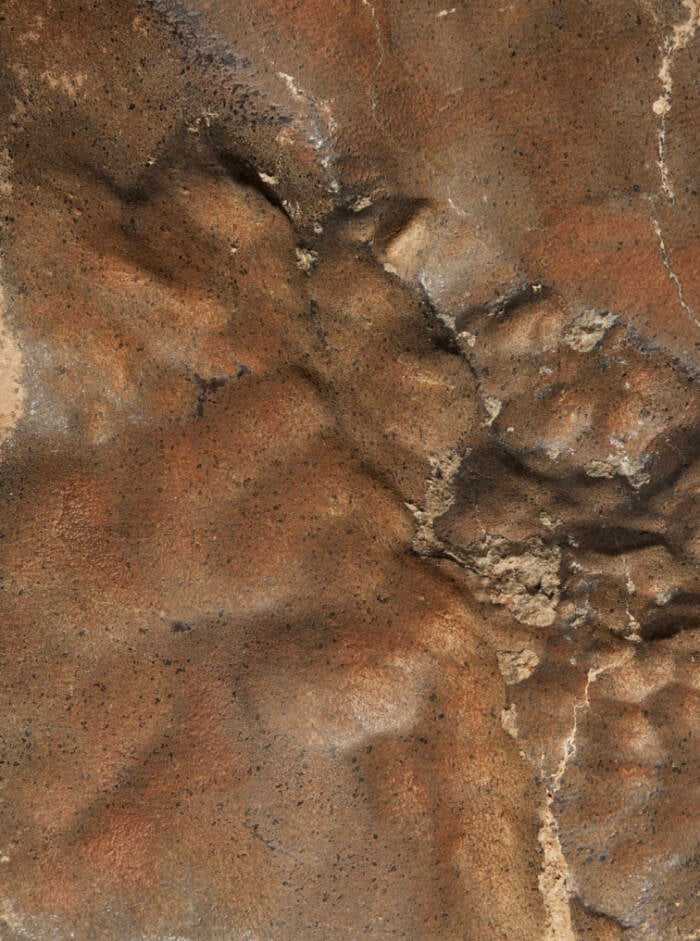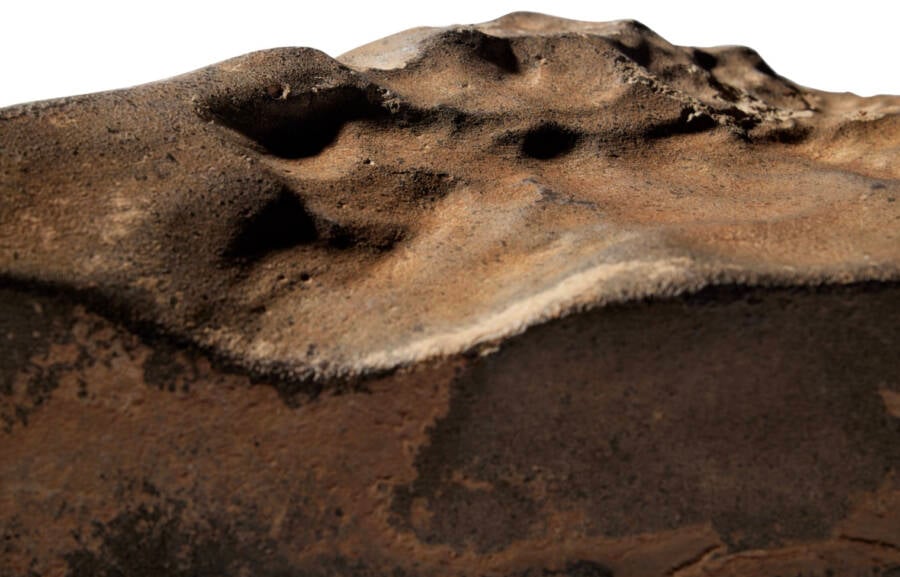Unlocking Secrets from Mars: The Largest Martian Meteorite Ever Discovered Hits the Auction Block, Sparking Global Curiosity
One such hunter discovered this large chunk on July 16, 2023, in the Kefkaf region of Niger. A small piece of the rock was then sent to the Shanghai Astronomy Museum for identification, where it was confirmed to be of Martian origin. Its given name, NWA 16788, stands for “Northwest Africa 16788.”

Sotheby’sThe maskelynite was formed by a great amount of heat and pressure during an asteroid collision.
This alone makes it a rare find. According to Sotheby’s, of more than 77,000 officially recognized meteorites ever found on Earth, only 400 are confirmed to be of Martian origin. NWA 16788 weighs more than 54 pounds, making it 70 percent larger than the next largest piece of Mars discovered on our planet. This meteorite alone comprises 6.5 percent of all currently known Martian material on Earth.
“Why is this scientifically important? Every other sample we have of the Martian surface is quite small,” said Cassandra Hatton, the vice chairman of science and natural history at Sotheby’s. “I mean, this is nearly double the size of what we previously thought was the biggest piece of Mars on Earth. This isn’t just a miraculous find, but a massive data set that can help us unlock the secrets of our neighbor, the red planet.”
Scientific Observations Of The Meteorite Reveal Its Uniqueness

Sotheby’sMartian meteorites are exceptionally rare.
Size alone doesn’t make this meteorite scientifically fascinating, though. As Sotheby’s notes, roughly 21.2 percent of the meteorite’s surface is made of a glass known as maskelynite, which was produced after an asteroid collided with the Martian surface. The impact of that collision was so intense that it metamorphosed the original minerals in the rock, heating them until they became glass.














Post Comment